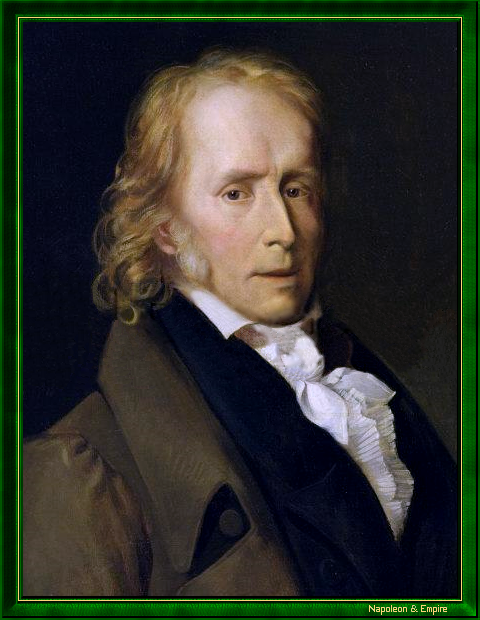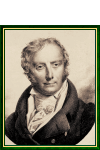Benjamin Constant de Rebecque
Pronunciation:

Benjamin Constant de Rebecque was born in Lausanne, Switzerland, on October 25, 1767. He was the son of a Swiss officer in the service of the Dutch, from a Protestant family originally from Picardy.
He studied in the Bavarian town of Erlangen, near Nuremberg, as well as at Oxford University and in Edinburgh, then in Paris, where in 1787 he fell in love with the writer Isabelle de Charrière, twenty-seven years his senior.
Despite his republican views, in 1788 he entered the service of Charles-Guillaume-Ferdinand, Duke of Brunswick, as chamberlain, and married a baroness of his court. In 1794, he sided with the French revolutionaries, resigning from his job, divorcing his first wife and embarking on a passionate romance with Madame de Staël that lasted until 1806.
From 1795 onwards, he published a number of political texts, moved to Paris and became a speaker at the Cercle Constitutionnel on rue de Lille.
After the coup d'état of 18 Brumaire (November 9, 1799), Benjamin Constant was elected to the Tribunat, where he expressed his liberal ideas and became an opponent of the First Consul, denouncing from January 1800 the regime of servitude and silence that was being prepared. Excluded from the assembly in January 1802, the following year he followed Germaine de Staël into exile at the Château de Coppet , near Geneva. Around the couple gravitated Charles Victor de Bonstetten, August Wilhelm von Schlegel, Jean de Sismondi, Adelbert von Chamisso and many other thinkers, artists and statesmen who would later become known as the Coppet group.
Benjamin Constant traveled extensively in Germany, especially to Weimar, where he met Johann Wolfgang von Goethe and Friedrich Schiller. He also rubbed shoulders with the brothers Friedrich and August von Schlegel, pioneers of Romanticism, inspiring Madame de Staël to write her book De l'Allemagne.
In 1808, Benjamin Constant secretly married Charlotte von Hardenberg, a long-time friend, while remaining intellectually close to Germaine de Staël and the Coppet group.
His liberal ideas, which had led him to oppose Napoleon I, also led him to reject the first Restoration. So, during the Hundred Days, he reconciled with the Emperor (under the influence of Madame de Récamier, the other great love of his life), helping to draft the Additional Act to the Constitutions of the Empire.
Persona non grata during the second Restoration, he returned to Paris only in September 1816, resumed his political activities and was elected deputy in March 1819, sitting in the liberal opposition.
Following the July 1830 revolution, he was appointed President of the Council of State, but died shortly afterwards, on December 8, 1830, in his Parisian hotel on the rue d'Anjou.
Benjamin Constant de Rebecque is buried in the 29th division of the Père Lachaise cemetery .
"Benjamin Constant de Rebecque", by Hercule de Roches (?-?).

Although, during his exile, Benjamin Constant launched into a five-volume historical analysis of religious sentiment, De la religion considérée dans sa source, ses formes, et ses développements, he remains better known as a theorist of liberalism and as a writer of novels, in particular the autobiographical Adolphe, published in 1816, which recounts the love affair of a young man with a much older woman, and Cécile, published a century and a half later, recounting events between 1793 and 1808. His other works include Le Cahier rouge and Journaux intimes, published in 1907 and 1952 respectively, and a French verse translation of Schiller's Wallenstein.
Other portraits

"Benjamin Constant de Rebecque". Lithography by Charles Etienne Motte (1785-1836).